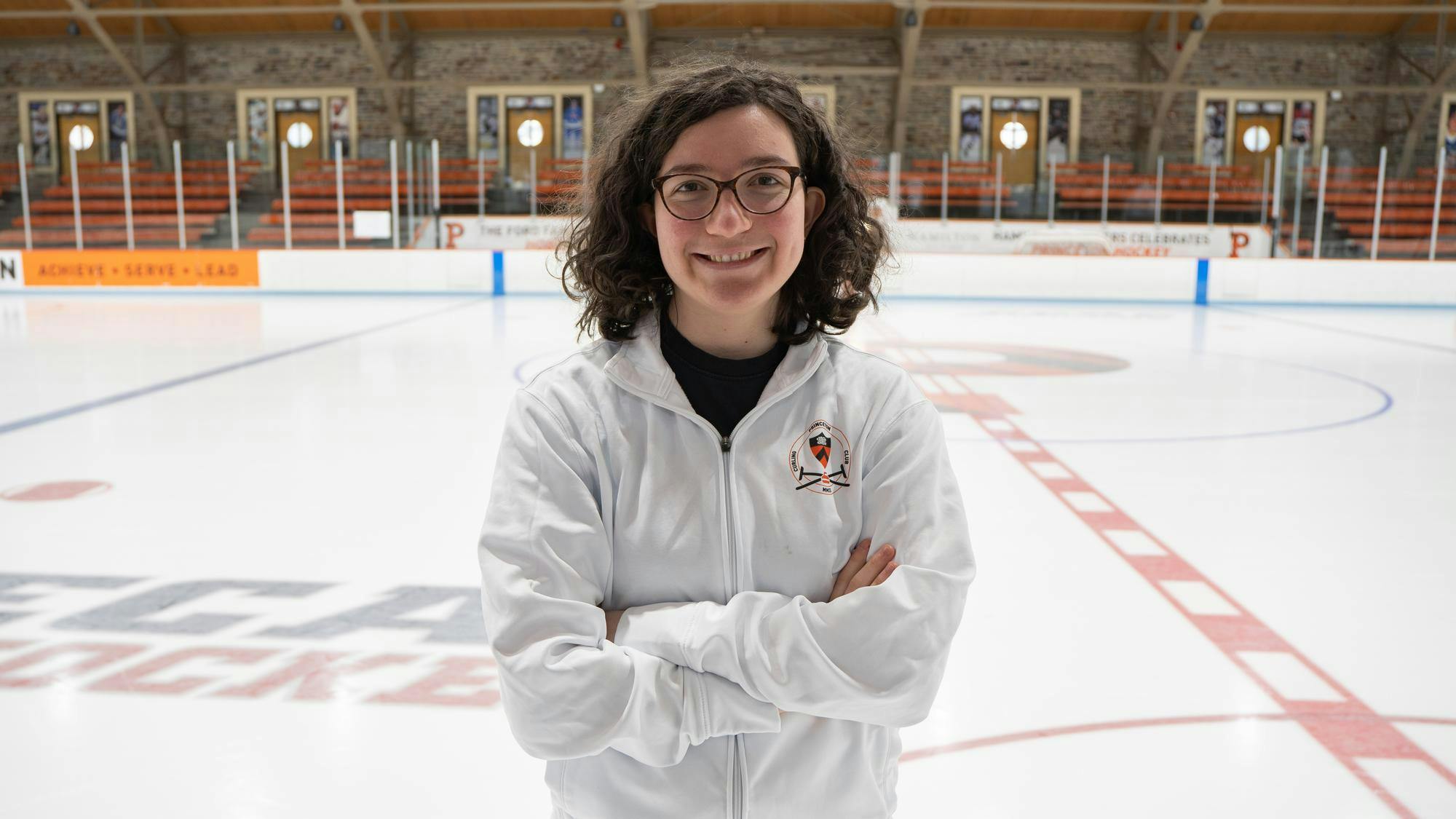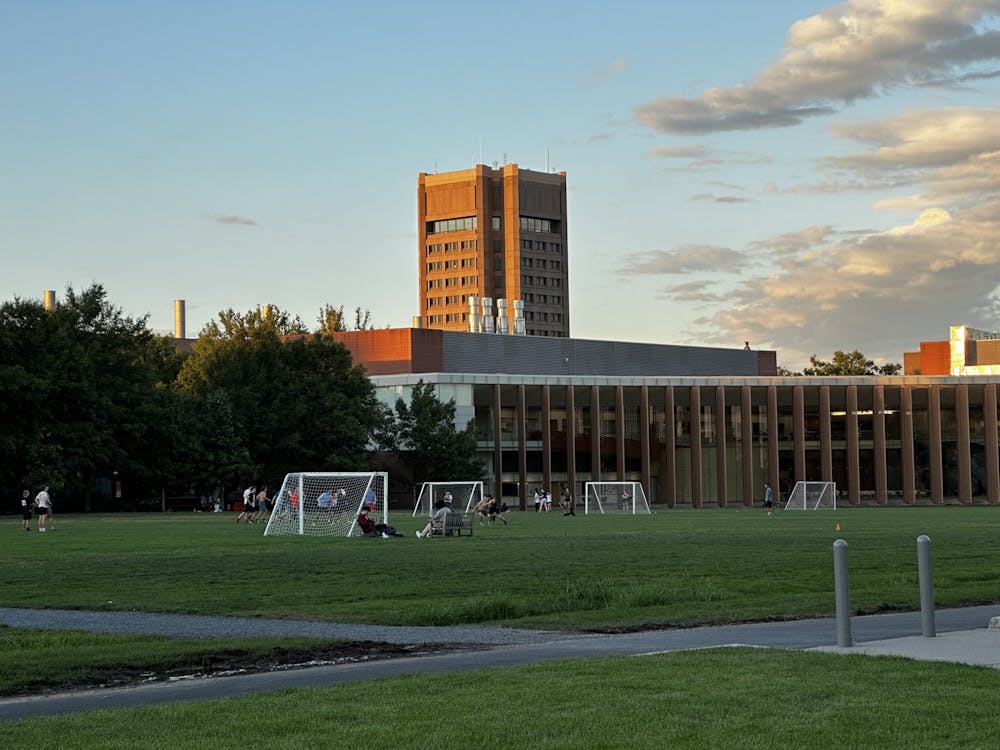“In my day, at the first Ivy League tournament, the team captain rented a U-Haul truck, and we put mattresses in the back of the truck. And the three officers sat in the cab of the truck, and the rest of us sat in the back … we slept in an ice hockey rink,” Stu Rickerson ’71, founding chair of the Princeton University Rugby Football Club (PURFC) Endowment recounted.
But fortunes have changed for the club that was founded in 1876. Today, the men’s and women’s rugby teams are supported by an endowment managed by the Princeton University Investment Company (PRINCO), the same entity that manages the University’s multi-billion-dollar endowment. This spring, the team used these financial resources to travel across the Atlantic to Paris for their 2024 tour.
Yet, not all club sports, or sport clubs, have been as lucky. Nika Belova ’24, president of club tennis, noted that her team has to “decline any invitations that aren’t drivable,” while Jack Lichtenberger ’25, president of the club men’s soccer team, said that men’s soccer had to turn down a tournament at Rutgers recently, because “we don’t have the money to pay for refs.”
Across interviews with club sport captains, Sport Club Executive Council members, and Campus Recreation officials, The Daily Princetonian found that while club sports expenses have risen and more clubs have applied for Campus Recreation funding, the overall club sports budget has remained constant. Budget constraints for club sports teams have resulted in repeated funding issues, with some students reporting hundreds of dollars in out of pocket expenses to make up the difference.
Funding for club sports comes from Princeton Athletics, and funding deficiencies for sport clubs are not a new phenomenon.
Club sports fill out a budget request each spring to be submitted to Campus Recreation, who then decides how much of the request to fill. If clubs qualify for a national tournament, they are also able to apply for additional championship funding to help fund associated costs, such as travel, hotel, and entry fees. Sport clubs are expected to fundraise at least one-third of their Campus Rec budget to supplement income, raising money through a number of different methods: from working concession stands at varsity athletics games to receiving alumni donations.
For the first year after their inception, sport clubs maintain a probationary status, meaning that they do not receive any funding from Campus Rec.
As the directors of sport clubs, Evan Najimian and Ro Ramirez oversee the funding and operations of all 39 sport clubs, as well as summer camps and women’s varsity rugby. According to Ramirez and Najimian, Campus Rec works with an annual budget of roughly $125,000 to be allocated to all 39 sport clubs, or just over $3,200 per club on average.

“We work with a pretty hard number,” Najimian said. This fixed budget means that the addition of new sport clubs, or a budget increase for a club, necessitates a decrease in funding for other sports teams.
The tight budget for sport club operations is also the reason that sport clubs have a yearlong probationary period. “It’s for us to protect our established clubs,” Ramirez said. “If we have, let’s say, five clubs come in the first year, and they’re all getting money, they’re pulling from those established clubs.”
When funding runs dry


Lara Katz ’24, founder of Club Curling, stands on Baker Rink.
Louisa Gheorghita / The Daily Princetonian
In April 2021, Lara Katz ’24 founded Princeton’s Club Curling team — a team she had been trying to start since before arriving at Princeton.
The team has come in second place at the College Curling National Championship two years running. Their success has been featured on both Princeton and Campus Rec’s social media.
Congratulations to @Princeton Curling Club who won the silver medal at the College Curling National Championship earlier this month!
— Princeton Campus Recreation (@PUCampusRec) March 22, 2024
They defeated Michigan Tech in the semifinal – and in style with their Tiger pants! 🐅#PrincetonCampusRec #PrincetonU pic.twitter.com/MHW6hGK283
Over her time in the club, however, Katz has had to pay several hundred dollars out of pocket to fund the club’s operations, just a microcosm of the funding shortage hamstringing almost all of the club sports teams.
In order to fund the club’s activities, including tournament travel and entry, the curling club turned to alternative funding methods. They began hosting fundraisers, teaching groups how to curl using their allotted ice rink time.
Last semester, the team’s ice time switched from Sunday afternoons to 11 a.m. on Mondays and Wednesdays.
“I was the only person that was not in class during that time,” Katz said. “I could not teach people to play the game.”
They charged dues, signed up to work athletics events, and cut costs by sleeping in dorms instead of getting hotels.
Travel expenses began to accumulate when the University’s Risk Management department implemented a policy this year that undergraduates were not allowed to use personal vehicles to get to practices or events. This policy was implemented after teams had submitted their budget requests for the year. For curling, a team that had previously relied on using team members’ vehicles to cut costs, this meant they had to rent vehicles without adequate funding. “That [threw] our budgeting out the window,” Katz said.
Other teams have taken issue with the change. Kaylee Kasper ’26, the Club Archery treasurer, said that she views the policy as a “big problem” with respect to club archery because the team has to pay “a good amount” to rent cars and “that limits your membership.”
Kasper is a head Archives editor for the ‘Prince.’
With their fundraisers gone and unexpected expenses, Club Curling has shouldered their financial difficulties. This spring, Katz ended up having to pay $508 out of pocket for a hotel room that was not reimbursed by Campus Recreation. The hotel room was needed for the team to attend a tournament that they hosted as a fundraiser.
Najimian cited curling’s lack of financial stability — particularly their indebted state — as the reason for Katz’s hotel reimbursement being denied.
“We can’t reimburse any money if there’s no money to be reimbursed from. We don’t want clubs to go further and further into debt,” he said.
The “limited pot”

Jack Lichtenberger ’25 is the president of the Men’s Club Soccer Team.
Louisa Gheorghita / The Daily Princetonian
Jack Lichtenberger is no stranger to club sports’ finances. As the president of the men’s club soccer team and member of the Sport Club Executive Council, he approves sport club funding requests and the development of new sport club teams.
Sport clubs attending national championships used to receive more funding as fewer teams applied for financial resources, but while more sport club teams apply for championship financing, the funding available for teams has remained constant.
Until a few years ago, many clubs “[didn’t] know that they [could] apply for championship funding,” Lichtenberger said. “There [was] no incentive for students to tell other students ‘Oh, you should apply for this,’ because then there’s less money, right?”
More teams have learned about the opportunity for championship funding as of late due to encouragement from Campus Rec. Ramirez noted, “I would certainly say that one of my missions this year coming in was to increase visibility and transparency on what funding is available to students.”
“It’s a double edged sword in the sense that we want to increase the visibility and the knowledge, but the more teams that apply, the less funding we have for that to be spread across,” he continued.
According to Lichtenberger, the Sport Club Executive Council has a “limited pot” to fund sport club championships. “It’s $12,500,” he clarified. Given the number of sport clubs applying for championship funding, “we’re starting to get to a place where it looks like we might only be able to give each team $500.”
Curling, however, received $1,800 to attend their national championships this spring. According to Lichtenberger, the unusually high amount awarded relative to other clubs was to alleviate the financial difficulties they had faced.
“Their three bank accounts collectively were at like negative $2,500,” Lichtenberger said. “We can only give them so much money. We did as much as we could.”
“At the end of the day, some of that cost is still going to come out of their pockets and that’s … not how the system should work,” he said.
Even after the probationary period ends, newer sport clubs still often suffer from a lack of financial stability, according to Sydney Johnson ’24. Johnson serves as president of women’s club volleyball and a member of the Sport Club Executive Council with Lichtenberger. “New clubs are always needing support,” she said.
When asked if certain groups are especially affected by funding issues, Johnson named the curling club, saying that “curling is a pretty expensive sport,” and that part of their financial distress stems from their young age, adding that “they’re just getting their budget.”
In addition, Johnson and Najimian each cited inflation as heightening the costs associated with sports equipment, because the total amount of funding for sport club teams has remained the same over the past few years despite costs rising.
Funding issues are not unique to club curling.
Reema Choueiri ’25, one of the presidents of the women’s club basketball team, said that “we’d do a lot more recruiting” if it weren’t for their limited budget. Eden Michael ’26, co-president of Princeton Running Club, a team that receives around $8,000 per year, said that the money given to them by the University was “unfortunately not [enough]” to cover all of their expenses. In some cases, the expenses become too overbearing on students, with Kasper saying that she had to drop the Club Equestrian team because their $500 per semester dues were “extremely expensive.”
Johnson, Najimian, and Ramirez all cited a desire for equity amongst sport clubs when awarding funding decisions. Johnson noted that some clubs “have a huge burden, because they serve a lot of people.”
The level of team participation factors into the amount of funding they receive from Campus Rec. “It’s really just how active they are as a club,” Najimian said. He explained that a factor that influences funding decisions is that some clubs “only stay locally and host local teams,” while others “travel to compete.”
Johnson emphasized the value of the educational aspect of certain sport clubs. “If we’re thinking about clubs like running, they’re ginormous, right, and they have smaller portions of people who actually compete, but then they’re also basically open to anyone who wants to learn how to run,” she said.
“We do have 39 teams that we have to look after,” Najimian said.
“It’s about … making sure that we’re able to facilitate the bare minimum, at least, for all of our clubs,” Ramirez added.
“In a perfect world, we’d be able to cover everything they do,” Najimian said. “Unfortunately, it’s not.”
For rugby, their solution to how to fund operations was financial independence. In 1997, a group of alumni from the men’s and women’s rugby teams came together to found PURFC. As Rickerson said, the goal of PURFC’s endowment is to “pay for things that the University didn’t provide and the students couldn’t afford.” This external funding, Rickerson said, allows a “more diverse group of players to get involved in a sport.”
When asked about how other sport clubs can seek to emulate the level of support and funding that rugby has created, Rickerson’s advice was to reach out to alumni. “Engage alumni, not just asking them for money, but asking them to come to games or come to your a cappella singing group or to come to Whig-Clio for a debate. And then talking with the alumni, because they want to find out what the student experience is for you all today,” he stated.
For an athlete like Johnson, who considered competing at the Division III level, but chose Princeton for its academics, club volleyball provides her with a space to continue her athletics where “you don’t have the stress of performing at the varsity level … but you still have that competitive aspect.”
Many captains also cited the community sports clubs generate. “Club sports are an important part of this campus, and campus life,” Lichtenberger said. “Everyone in a club sport … will tell you that it’s a very important part of their Princeton experience. And more money would make a big difference.”
“A little would go a long way.”
Suthi Navaratnam-Tomayko is head Data editor and Sports contributor for the ‘Prince.’
Please send any corrections to corrections[at]dailyprincetonian.com.
Correction: A previous version of this article stated that Rickerson was the founding chair of PURFC, not the PURFC endowment. The 'Prince' regrets this error.








